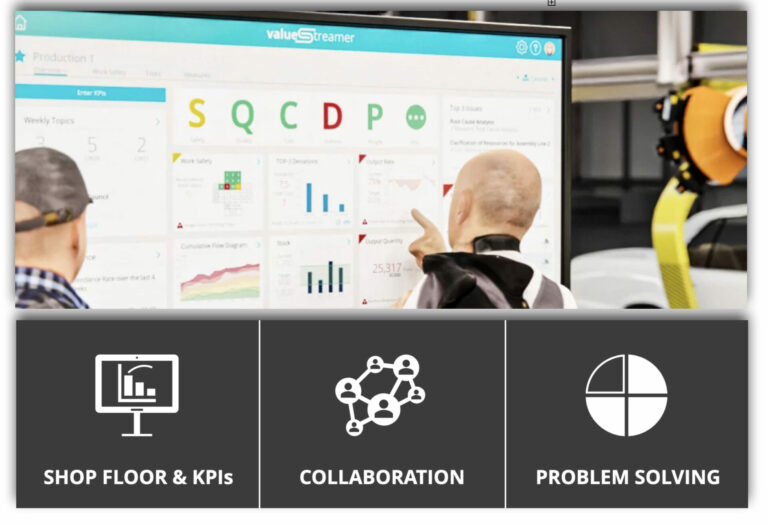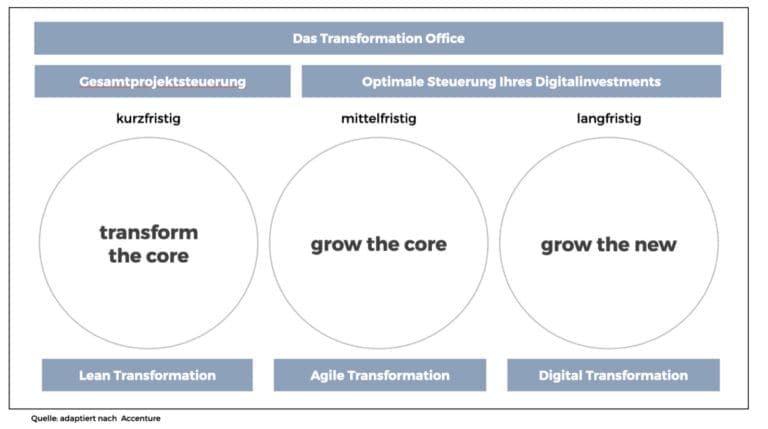Strategy deployment & planning & operational management
In corporate management, an essential question is how the process of strategy development gets into operational implementation?
This is done with the help of rolling planning and project management in the context of store floor management.
The important question how you get your strategy effectively deployed will be answered in this article.
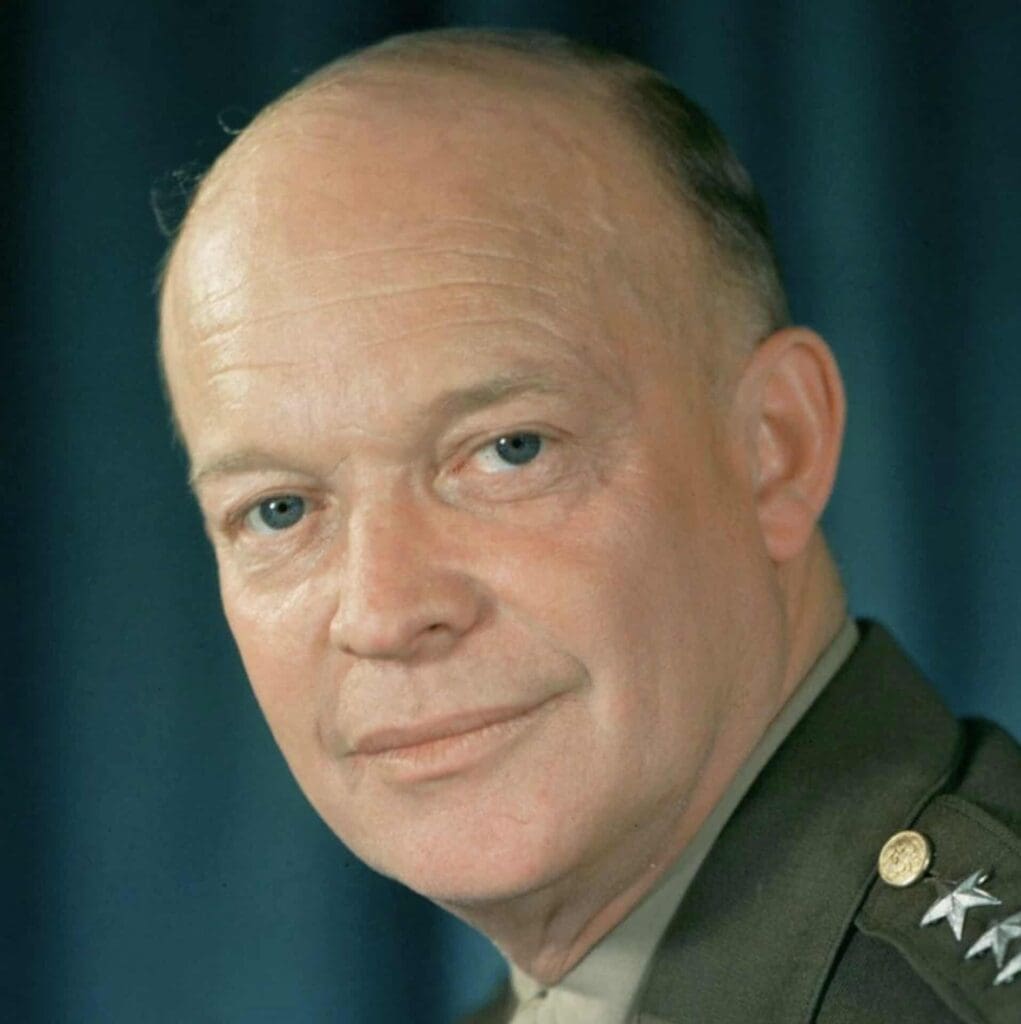
„Planning is indispensable, but plans are useless.”
– Dwight D. Eisenhower
This abbreviated quote* from “Ike” Dwight D. Eisenhower (b. October 14, 1890, † March 28, 1969), American 4-star general, World War II Supreme Commander, and President of the United States expresses what many practitioners in dealing with complexity.
Regardless of excellent planning in advance, the reality on site proves to be the decisive factor for operational implementation on site. While good planning is indispensable, any planning, no matter how good, does not necessarily stand up to the reality on site.
The operational implementation of well thought-out plans, while taking into account the constantly changing conditions and controlling deviations from the target, is ultimately the decisive factor for success.
*The quote in full reads: “In preparing for battle, I have always found that plans are useless, but planning is indispensable.”
So how does strategy get to the operational level via planning?
In view of the increased complexity and dynamic of global markets, the question arises as to how strategy development can be translated into operational implementation with the help of rolling planning and project management in the context of shopfloor management.

This question is of crucial importance, especially in the context of the current discussion about agile project management. Agile methods are applied not only, but primarily, in the area of product development. The decisive factor, however, is fully networked planning and operational control across all areas. The method of choice in this case is the concept of shopfloor management.
On-site experience in companies shows that despite good planning, it is primarily the operational implementation of projects in the company that causes the greatest headaches and holds the greatest potential for improvement.
Strategy deployment & rolling planning & operational management
The strategy deployment process and project planning are used to operationalize key strategic goals in the company.
Strategy development is translated into operational implementation with the help of rolling planning and project control in the context of shopfloor management.
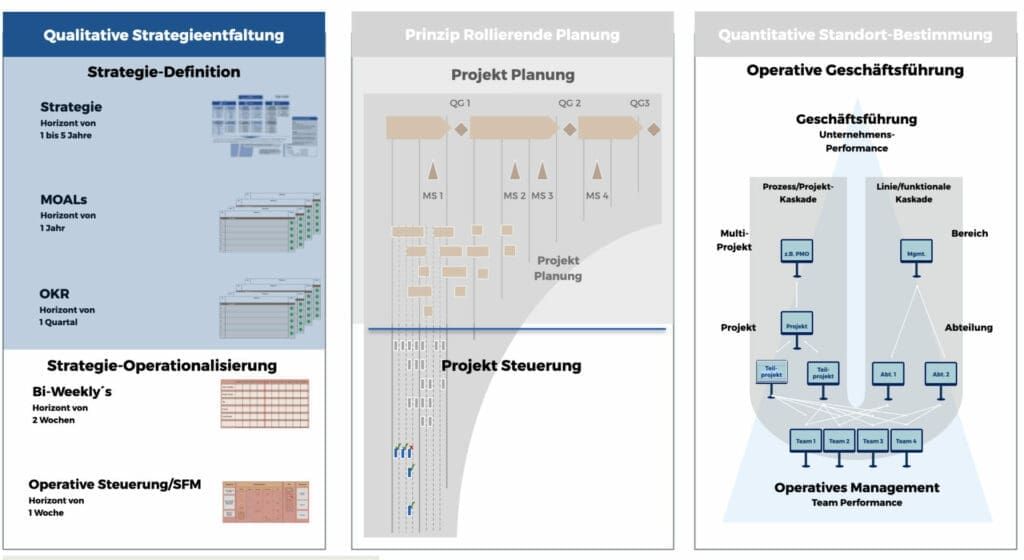
Qualitative strategy deployment
Qualitative strategy development includes the following elements of strategy definition:
- Strategy development with breakthrough goals for a period of up to 5 years
- Breaking down the overall strategy into divisional strategies
- Development of annual targets per area
- Development of quarterly targets per area
Qualitative strategy development includes the following elements of strategy operationalization:
- Conducting bi-weekly meetings every 14 days to review operational execution of quarterly objectives
- Weekly operational management of tasks derived from strategic projects.
Strategy deployment based on lean management with Hoshin Kanri
Hoshin Kanri is operated as a classic top-down strategy development process and follows the process described above. The breakthrough targets, the annual targets and the improvement projects, their success factors and the persons responsible are recorded in a so-called X-matrix. The X-Matrix is the central document in the strategy development process based on Lean Management. Crucial to the success of this approach is the harmonization of the overall strategy across all areas in the form of area targets. This requires a high level of coordination between the areas.
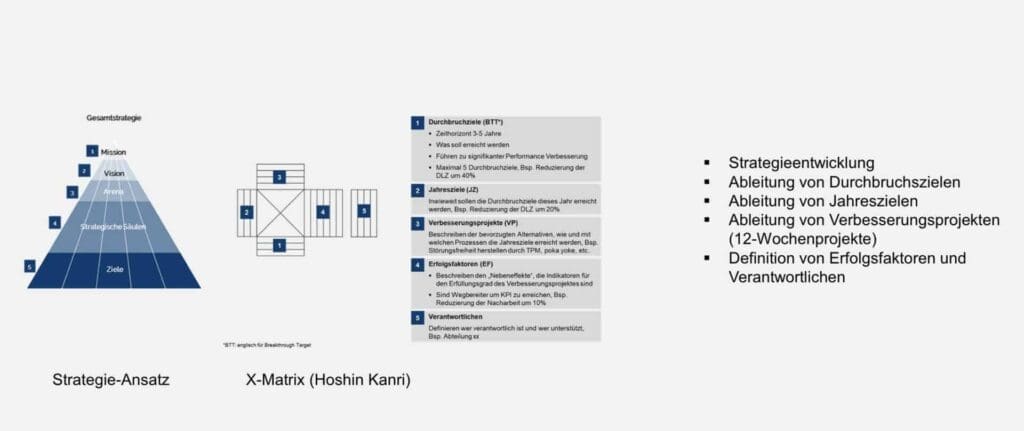
Agile strategy deployment based on OKR
Instead of breaking down goals top-down, in OKR strategy deployment strategic goals are defined in this approach. However, the OKR process leaves it up to the employees in the divisions and team, according to their ideas and capabilities, to achieve the strategic goals via the derivation of the objectives and core results.
It is a dynamic process of coordination that constantly loops towards the overall strategy. Designing to proactively focus and prioritize an organization is the focus of OKRs. It is about motivating people to participate positively in the development of the company.
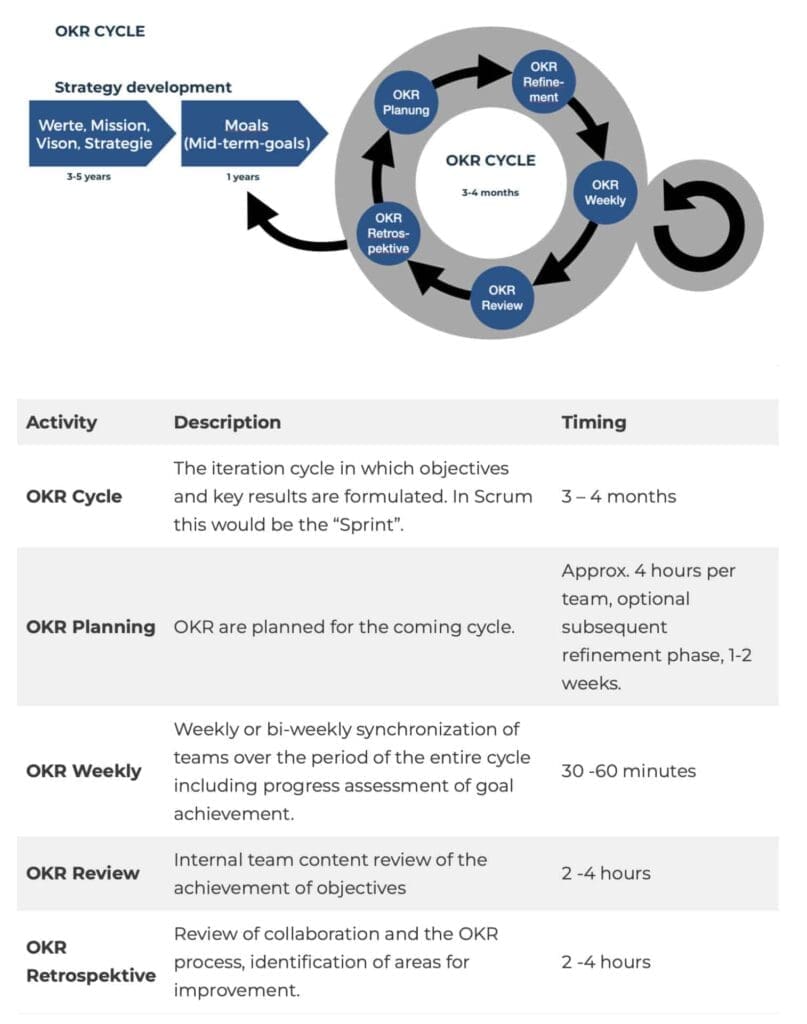
Interim Conclusion:
Regardless of whether you choose the classic or agile method of strategy deployment, ultimately it comes down to operationalizing the strategy at the working level. Strategic projects should be understood as internal projects. As we will see below, these are steered into the organization via the project cascade in the “Performance U”. The tasks resulting from the projects are controlled within the framework of shopfloor management in the respective teams.

Contact us now!
We have more than 20 years of experience and deliver high quality consulting for your Agile, Lean or Digital Transformation.
Project planning and project management
In projects, we distinguish between project planning and project management.
- In project planning, the focus for the project manager is on the customer.
- In project management, the team leader focuses on implementing the tasks in the team with the help of store floor management.
Project planning and project control should naturally go hand-in-hand. In the reality of the corporate world, however, these two functions are usually served by partially different areas in the company and different software systems, which ultimately leads to a disruption in the flow of information.
However, in order to ensure operational implementation, a functional shopfloor cascade including a corresponding management culture is necessary in any case and should always be considered as the first step towards better project control.
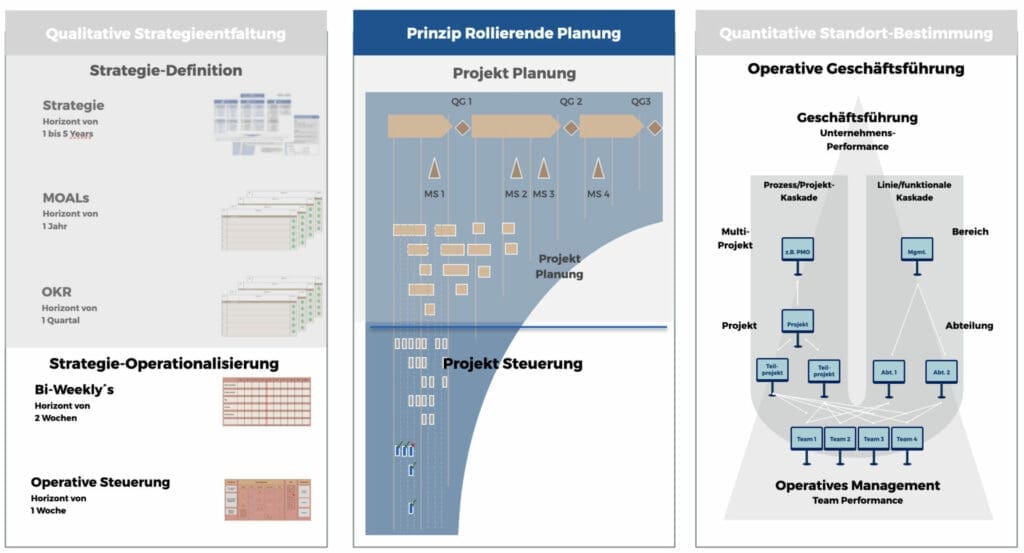
Planning Paradox
In project management, we can observe a paradoxical situation. The more precisely you plan, the less precise the planning becomes, because the planning status has to be constantly changed due to changes in the outside world. To use the words of my esteemed colleague Dr Andreas Romberg: “The more precisely you plan, the harder chance hits you!”
Therefore, we need a planning principle that, on the one hand, ensures reliable long-term planning and, on the other hand, enables control despite changes in the environment.

“The more precisely you plan, the harder chance hits you!”
— Dr Andreas Romberg
Rolling Planning Principle
The principle of rolling planning enables us to achieve a balance between long-term and medium-term planning and short-term control. The logic of rolling planning can best be derived from the “Rule of 10”.
The rule of 10
This logic can be easily remembered via the “Rule of 10”. A rolling plan plans from the current week/month into the future. Rolling planning with the 10-rule is based on this scheme:
- 10 months (multi-project planning)
- 10 weeks (project planning)
- 10 days = 2 weeks (project control)
- 1 week (project cycle)
The (multi)project planning covers the period 10+ months. This planning is usually created in a project planning tool. Key work packages and milestones are recorded in a project schedule.
In the 10 weeks project planning, dependencies between work packages are constantly rebalanced.
The team leader leads his team operationally in the project control with the time horizon of 10 days (2 weeks).
The project cycle in project control is the respective work week. The manager organizes himself and the team within the work week in such a way that the respective work results can be achieved.
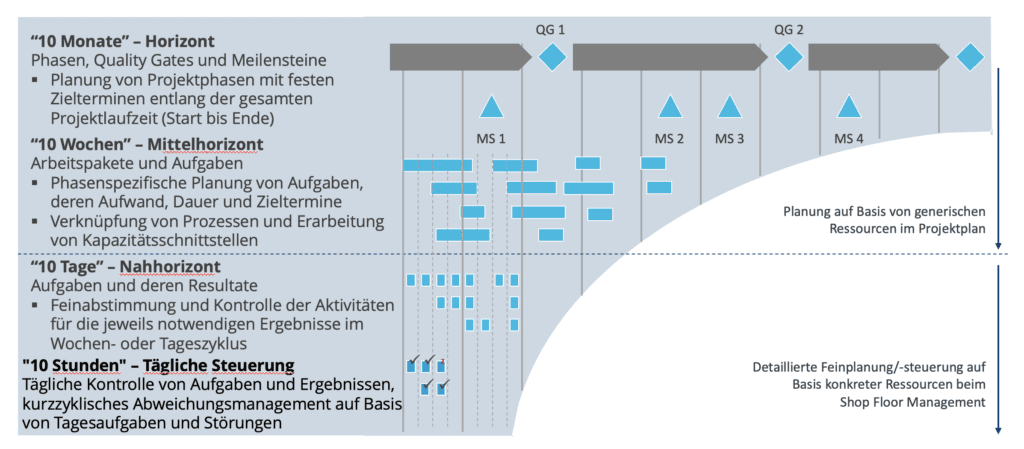
Example: planing and execution of a sailing trip

The interaction between project planning and project control can be well described using the example of a sailing trip.
Approximately 10 months before the planned summer trip, the enthusiastic skipper deals in the fall with the seasonal planning for the next year. The ship is put into winter storage and various activities are initiated to maintain the ship so that it can be launched again next spring. (Multi-Project Management).
Approximately 10 weeks prior to the planned summer cruise, the final route is determined and appropriate detailed planning is done. (e.g. crew is informed, current sea charts, provisions, last maintenance of the engine and sails).
With the departure from the berth and the navigation to the first destination we change from project planning to project control. The 3-week cruise is broken down into stage goals. In daily meetings the daily goal is discussed and the stage goals are sailed.
Depending on the condition of the crew and the ship and the overall weather situation, the stage goals are implemented daily and deviations from the standard procedures on board and from the stage goal are managed together with the crew. Short-cycle arrangements help the team to correct mistakes and ensure optimal procedures. In the end, the harmonious interaction of the crew members on board determines the successful implementation of the plan.
Quantitative operational management and control
If we now finally turn to the area of quantitative operational management and control in the context of strategy deployment, it cannot be emphasized enough how important the instrument of shopfloor management is.
Because at the end of the day, despite all the good planning, the “rubber needs to hit the road”. The strategy deployment is decided in the daily stands / daily´s of the team in which the execution of the tasks is monitored. This is where leadership is needed!
Shopfloor management means deviation management
- Shopfloor management is used for operational management and visualizes, structures and channels the flow of information in the company.
- Managers are enabled to identify deviations and problem areas at an early stage, to escalate them if necessary, and to initiate structured improvements.
- The focus here is on the operational management of the teams. The focus is on managing the employees.
- It is about managing deviations, continuous problem solving and continuous process improvement.
- Deviations are resolved directly or escalated via the Shopfloor Management cascade.
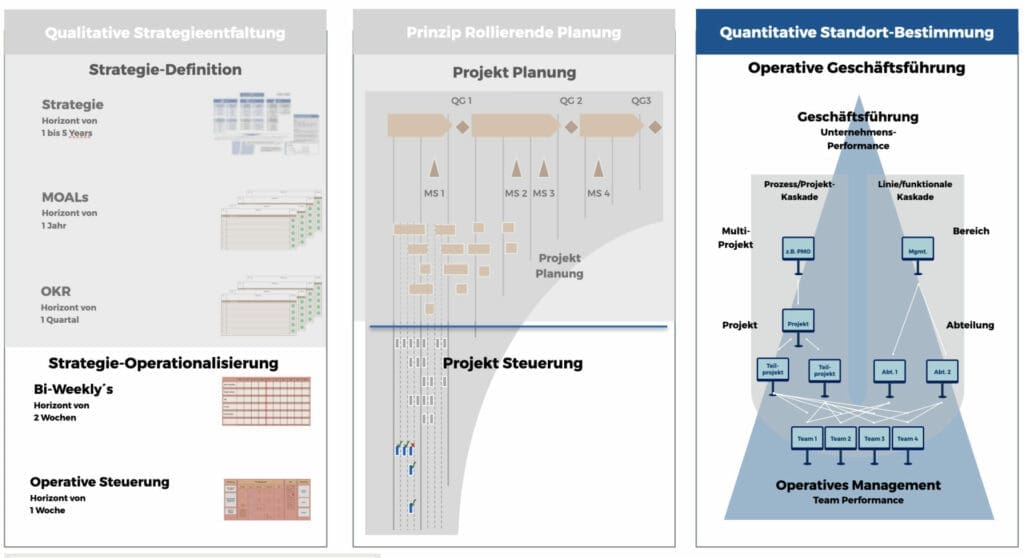
The “Performance U”
The experiences in companies on site show that despite good planning, it is the operational implementation of the projects in the company that causes the biggest headaches and has the greatest potential for improvement. This is where the concept of the performance “U” comes in.
The shopfloor management cascade is divided into the process/project cascade and the line/functional cascade according to the performance “U”.
The “Performance U” logic is based on these principles and is individually adapted to the organizational structure of the customer!
The planning horizon in project control is based on daily, weekly, 2-weekly deviation management.
The project and line view is harmonized at the C-level by reconciling multi-project and capacity management.
The project cascade visualizes, schedules and tracks customer projects, project-related information and tasks (backlog).
The line cascade coordinates the implementation, organizes the support needs of the teams, measures and optimizes the service delivery via KPIs and continuous improvement process. Operational management is responsible for the implementation of the project or order processing. Problems that arise in these areas must be uncovered, clarified and eliminated in the long term.
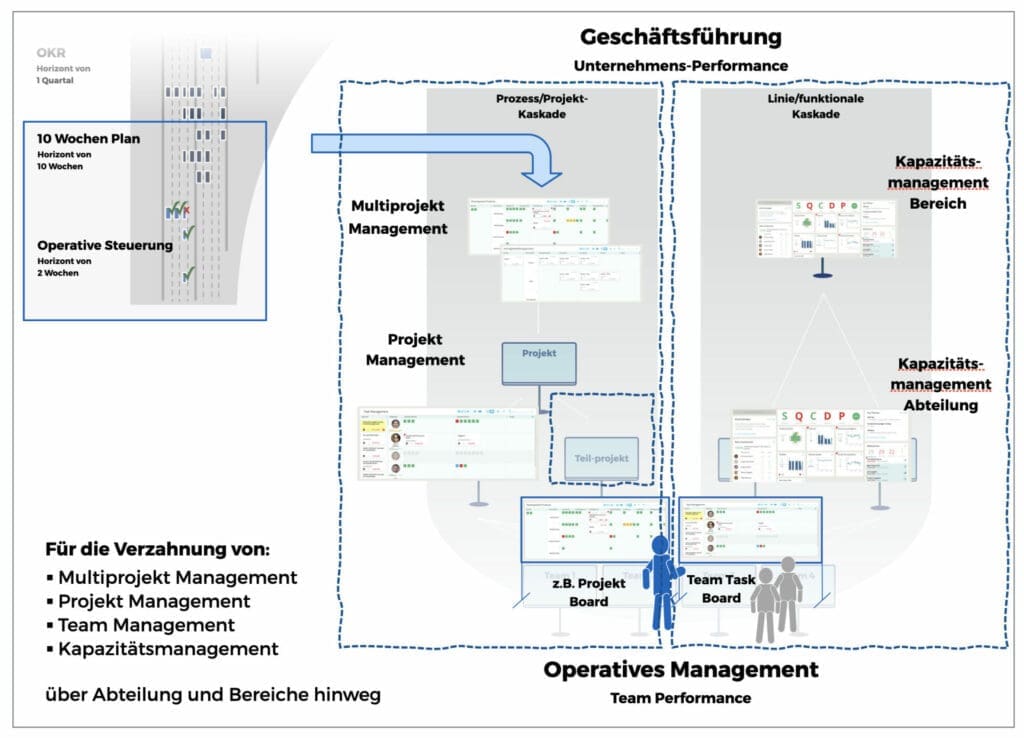
Digitale Shopfloor Management
Of course, the digitalization of the working space does not stop at the topic of shopfloor management. Just like the project management solutions mentioned above, there are now a whole range of software projects and software products that specialize in the implementation of digital shopfloor management (dSFM).
The difference between pure project management solutions and shopfloor management solutions lies, among other things, in the integration of KPI dashboards, CIP process, PDCA cycle, problem solving, escalation logic and capacity control. dSFM solutions are focused on deviation management.
An all-in-one solution that combines project planing and operational project management does not yet exist in the market. Meanwhile the project management solution and the shopfloor management solution is connected through a data interface that allows synchronization of project milestones and task packages and their status between both systems based on regular intervals.
We would like to mention ValueStreamer as a possible alternative, which as a software optimally covers the requirements for operative control in the sense of store floor management.
Here, too, there are competing products and it remains to be seen which product will prevail in the end. If you are looking for a quick, uncomplicated start into the world of dSFM, ValueStreamer is the right choice.
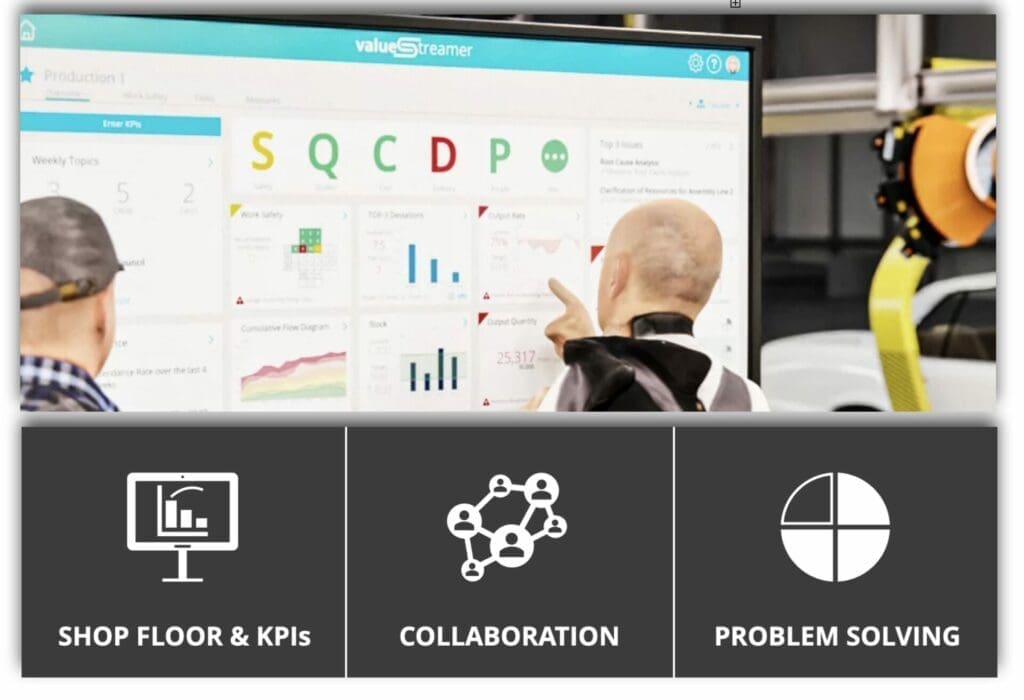
Collaborative Excellence.
With the attitude of a servant leader, employees are gradually empowered to organize themselves – the basis for agile working.
The company-wide interlocking of management levels is the foundation for Collaborative Excellence.
Perfect planning is useless if there is no implementation structure on the shopfloor. In the end, it’s all about managing valuable people well and solving problems and deviations.
As colorful as the new software Kanban tools are with their promises of simplicity and ease, there is one thing these tools cannot replace: people-oriented, principle-driven leadership on the shopfloor, where work gets done.

Conclusion:
Successful corporate management requires a coordinated interaction of the strategy deployment process with rolling planning and operational implementation via shopfloor management. Without good, forward-looking planning, no success can be achieved, but even more so without operational management and control of deviations.
Strategy deployment can emerge via Lean Management or Agile Management. In project planning, the customer is the focus for the project manager. In project management, the team leader focuses on the implementation of tasks in the team with the help of Shopfloor Management. Taking the “Rule of 10” to heart, it is possible to effectively implement operational control according to the logic of the “Performance U”.
New software solutions promise easy and simple implementation of projects. At the same time, there are software solutions that are specifically designed to meet the requirements of operational implementation on the shopfloor.
In the end, we need committed managers who implement projects together with committed employees and manage deviations. For this, we need a well-developed leadership culture and well-trained managers and the method of Shopfloor Management.

Contact us now!
We have more than 20 years of experience and deliver high quality consulting for your Agile, Lean or Digital Transformation.
Vertrauen Sie auf unsere langjährige Erfahrung. Gerne begleiten wir Sie. Nehmen Sie mit uns Kontakt auf.

